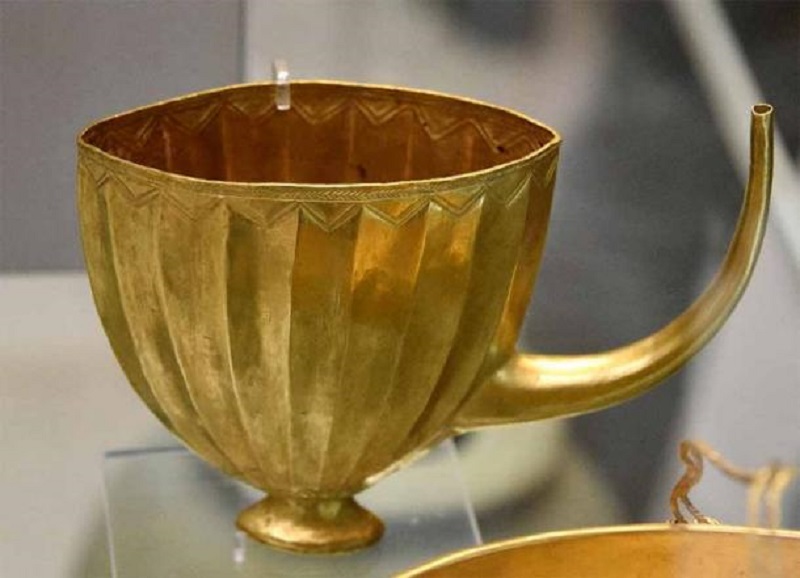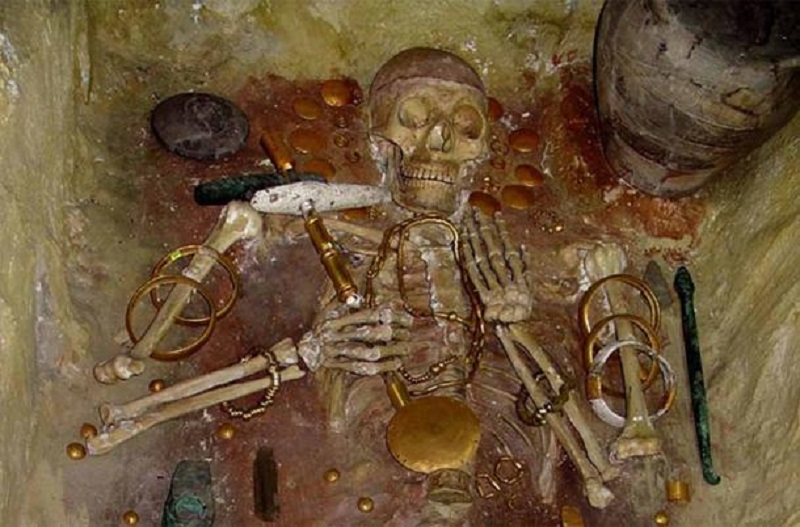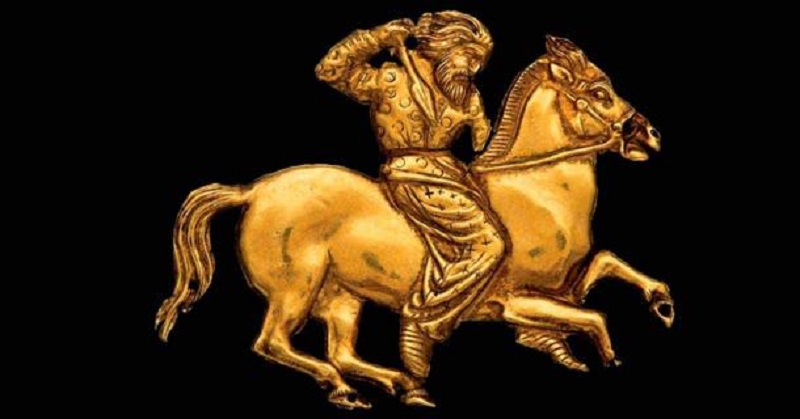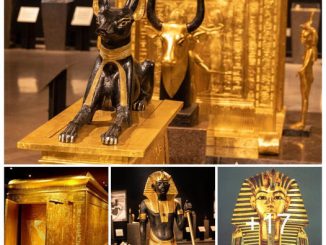Gold and humans have a very special relationship and people still consider gold to be one of the most valuable materials on the planet. In this article you can find an overview of the history of gold, its discovery, value and symbolism throughout the centuries.
Gold has a fascinating history and it is incredibly valuable to us. Kings, magicians and emperors always knew that it was a special material, and reading this article, you will understand why.
When was gold discovered?
The exact time, place and circumstances behind the discovery of gold and its properties remain mysterious. It can be found in rivers or lying on the ground, ‘natively’, in the form of some natural nugget or even small specs.
Although the origins of human use of gold must lie much further in that past, the earliest gold artifacts found date to the 5th millennium BC, from the Varna necropolis in Bulgaria .
Elite male burials were found at the Bronze Age Varna necropolis (4600-4200 BC). (Yelkrokoyade/ CC BY SA 3.0 )
Gold jewelry and a knife with a decorated gold handle were found buried in the Tomb of Djer, the third king of the First Egyptian Dynasty, at Abydos, Egypt from about 3000 BC BC. There is also evidence of an Egyptian alchemist named Zosimos, who is said to have been the first to find pure gold.
Gold objects have been recovered from the Royal Cemetery of Ur, in Southern Mesopotamia, indicating a reverence for gold and goldsmithing skills from the Sumerians around 2600 BC.
It is known that gold was mined in Nubia around 2450 BC and it was discovered to be filled with the fascinating metal, which would soon become the standard medium of exchange internationally. Egypt became an extremely wealthy country thanks to its control of these reserves. The Shekel coin weighing 11.3 grams of gold/silver alloy was introduced as the standard currency in the Middle East.
The eternal value of gold has been established for the world.

Golden vase with long spout probably used as a drinking straw, from the Royal Cemetery at Ur, Southern Mesopotamia, present-day Iraq, Early Dynastic Period, c. 2600 BC. ( © British Museum, London.)
Gold is scarce and because of this, it increases in value with each passing year. In the next section, you will read more about the characteristics that make gold valuable, but for now, it is interesting to compare the price of gold and the price of Bitcoin near 80K. Both gold and Bitcoin are considered extremely valuable due to their scarcity.
What makes gold valuable?
Nowadays, almost anything can be created in a laboratory, but not gold. As far back as 300 BC, alchemists in ancient Alexandria tried to create gold from base metals, and others tried without success until the Renaissance.
Gold has several characteristics that can give it value as we know it today. First of all, it looks good with colors and brightness. This may be the initial attraction to the material. But it’s also durable, doesn’t tarnish, and is even considered virtually indestructible yet malleable, which actually makes it useful in the modern world. It is one of the densest metals and is a good conductor of heat and electricity, and is therefore very valuable for today’s engineering and technology.
But what makes gold such a valuable material is its perceived value, which is a tradition and dogma of ancient times. Almost every civilization that comes into contact with it imbues it with some kind of supernatural and magical power. From the ancient Egyptians to the Minoans, Assyrians, Etruscans, and most other civilizations, gold continued to be widely used in jewelry and ornaments.
The Scythians of the 9th-4th centuries BC were famous for gold making and horse riding. The Scythian golden tablet depicts a Scythian knight holding a spear. (Public domain)
Gold in modern times
In more modern times, this material is widely accepted in exchange for goods and services. Interestingly, Russia became the world’s leading gold producer in 1823, and in the following years more gold was produced in the world than in all the years since 1492. This depends much of the gold found in California and Australia. Gold has been found in many places but this material is still rare.
Not everyone knows that pure gold is too soft to be processed for long periods of time and therefore it is often alloyed with other metals, which will make it harder and therefore more suitable For use in jewelry and other activities. Silver is one of the most common metals alloyed with gold, along with copper and zinc.
Magical properties of gold
As mentioned, gold is often associated with a number of magical, spiritual, and mystical properties. Because it is chemically inert, the material is also said to prevent mental corrosion, fatigue, and even negativity. From a mystical perspective, gold symbolizes purity and the spiritual aspects of the universe, and it is said to allow people to be present and maintain contact with the ultimate source of all things.
Usually, gold is used in religious ceremonies and it is especially used in the Catholic church. According to folk beliefs, gold is believed to bring good luck, and like copper, it is believed to ward off evil spirits.
When will it be popular?
However, there have been cases throughout history when gold became obsolete. According to more than 4,500 artifacts found by researchers, early society located between the Black and Caspian Seas lost its appreciation for gold. According to analysis of the artifacts, gold’s lack of popularity has remained the same for about 700 years. Researchers have shown that gold objects became rare across much of the territory between 1500 and 800 BC.
This is an interesting piece of history because it reminds us that value is not a solid and universal matter, but that it can change according to circumstances. In other words, the way people value gold is not a constant in space and time. Today’s global human civilization continues to value gold, but there are certainly other materials that have equal and higher value and utility in today’s technological world. So what will the value of gold be in the future?
Top image: Pile of coins and gold bars. Argor Heraeus, Münze Österreich, Royal Canadian Mint, United States Mint, Australian Mint in Perth, panda and Krugerrand. Source: Zlaťáky.cz /Unsplash




